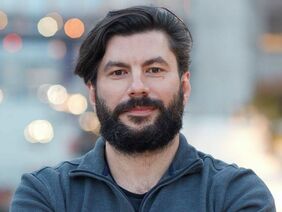Jena. L1s are the only active, autonomous (protein coding) retrotransposons in humans; non-autonomous SINEs, such as Alu, hijack L1’s enzymes for their own mobilization. L1s proliferate in genomes through a 'copy-and-paste’ mechanism that involves viral-like ribonucleoprotein intermediates, imbued with immunogenic pathogen associated molecular patterns. L1 proteins (ORF1p, ORF2p) preferentially assemble with the L1 RNA that encodes them (a property termed cis preference), implying a mechanism of assembly that restricts trans complementation. These assemblies are poorly understood and heterogeneous in composition, incorporating many other RNAs and host proteins that form abundant cytoplasmic foci (RNA granules). In his talk, John LaCava will present some of his research group's findings on these L1 assemblies. ORF2p is the "business end" of L1, possessing the required endonuclease and reverse transcriptase activities, but the mechanisms of L1 mobilization remain poorly understood.
In addition, John LaCava shows new biochemical and experimentally determined structures of L1 ORF2p that provide new models for its mechanisms. Consistent with its mutagenic potential and pathogenic properties, L1 is normally silenced in most somatic cells. However, dysregulation of L1 expression is associated with several human diseases - e.g., cancer, autoimmunity, neurodegeneration - and, generally, with aging. L1 therefore represents a promising biomarker opportunity and therapeutic target, which I will also present and discuss.
Information about John LaCava, Ph.D:
at the , New York
at the , Groningen
at his .
| Title of Talk: | LINE-1 retrotransposons: interactomes, structures, and implications in human diseases |
| When: | Wednesday, January 17, 2024, 3:00 pm |
| Where: | Seminar room “Nucleus”, main building (FLI 1), Beutenbergstraße 11, Jena |
| Host: | Dario Riccardo Valenzano (Group leader Evolutionary Biology / Microbiome-Host Interactions in Aging) |









